How to Make Lavender Syrup
Lavender syrup tastes like liquid happiness and is the perfect way to brighten up a variety of recipes with a super simple but lovely flavored infusion. All you need are three ingredients and some steeping time.
Jump to Recipe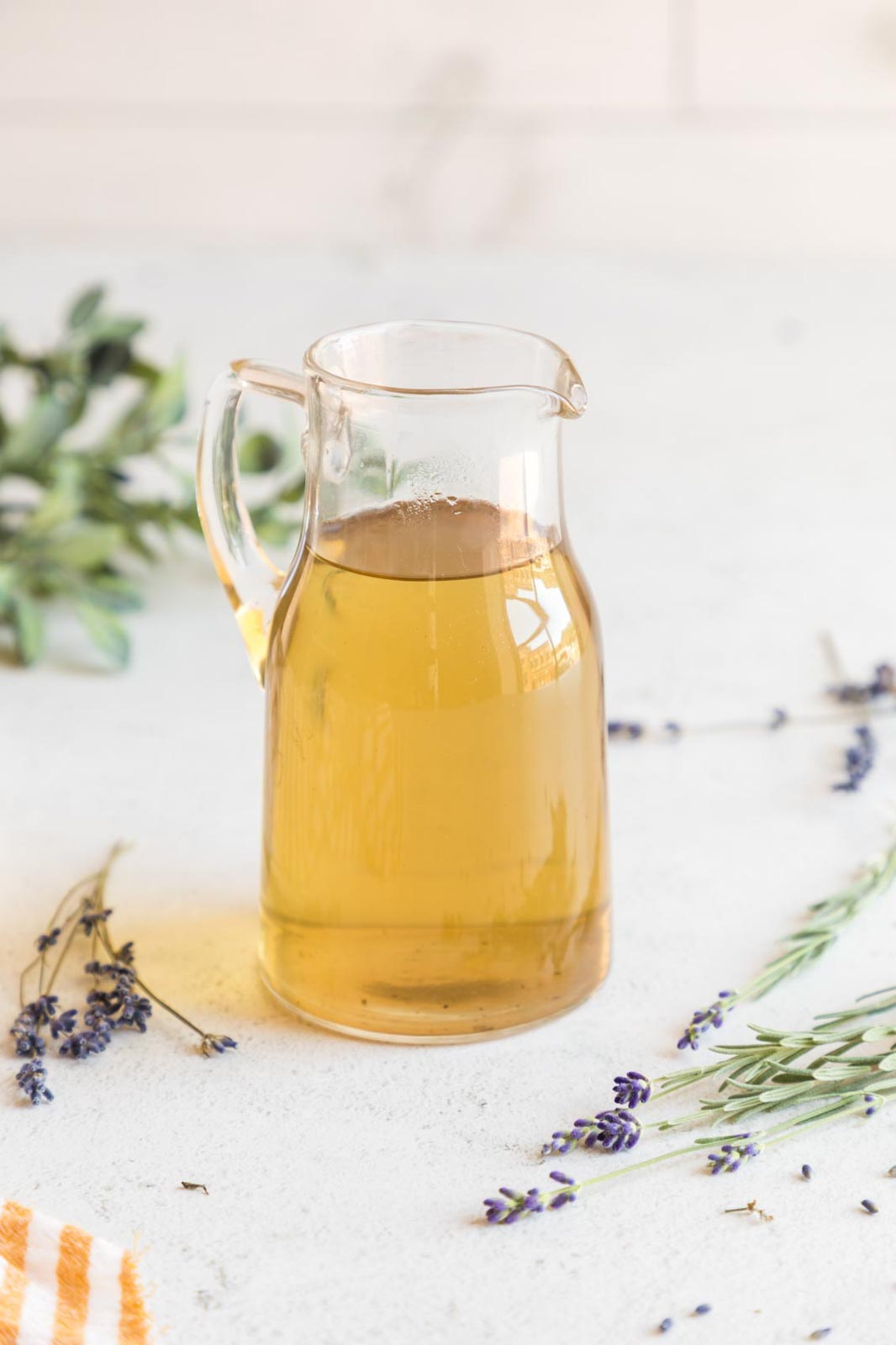
Most of us think of lavender in soap or cleaning products and often skip over its beautiful aroma in food.
And when combined in a sugar syrup it becomes an easy way to flavor lots of other foods quickly. You’ll absolutely love how bright and fresh this syrup is–it’s not soapy at all–try it in your favorite drinks and sweet treats.
Key Points You Want to Know
- Lavender syrup is incredibly versatile and can be used to sweeten lots of food and drinks
- You’ll need culinary lavender, sugar or honey and water to make syrup
- It’s good for two weeks in the refrigerator
- Try freezing it in ice cube trays for later use if needed
Be sure to check out the full recipe and ingredient list below
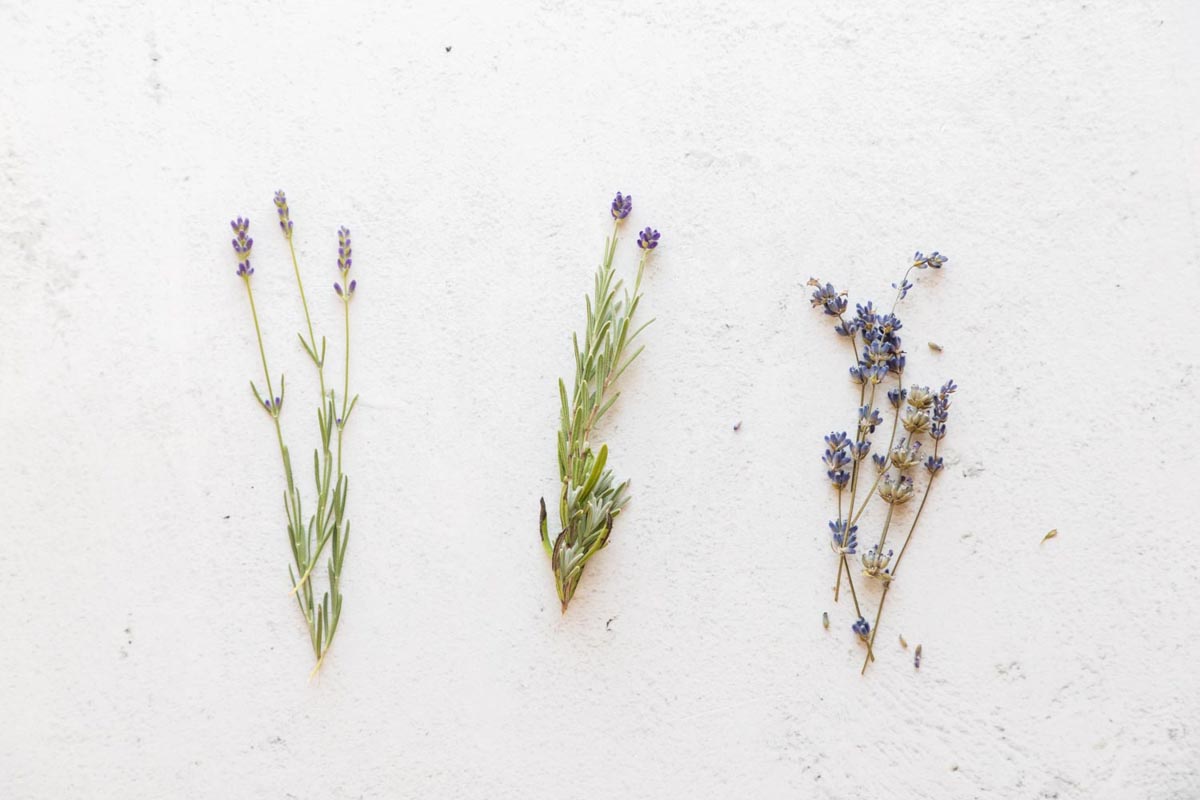
Understanding Lavender
Origins of Lavender
Lavender is a flowering plant that belongs to the mint family. It is native to the Mediterranean region and has been used for centuries in various cultures for its medicinal properties. The plant is known for its beautiful purple flowers and fragrant aroma. Lavender is also used in cooking, perfumes, and cosmetics.
There are over 40 species of lavender, and each one has its unique characteristics. The most common species used for culinary purposes is Lavandula angustifolia, also known as English lavender.
This species is known for its sweet and floral flavor, making it ideal for making lavender syrup but you can also use French lavender if that’s what you have on hand.
Health Benefits of Lavender
Lavender has been used for its medicinal properties for centuries. It is known to have a calming effect on the mind and body, making it an excellent natural remedy for anxiety, stress, and insomnia. Lavender is also used to treat headaches, migraines, and depression.
In addition to its calming properties, lavender also has anti-inflammatory and antiseptic properties, making it an effective natural remedy for skin conditions such as acne, eczema, and psoriasis. It is also used to treat minor burns and insect bites.
Lavender is also rich in antioxidants, which help to protect the body against free radicals and prevent oxidative stress.
Tips for buying lavender buds online
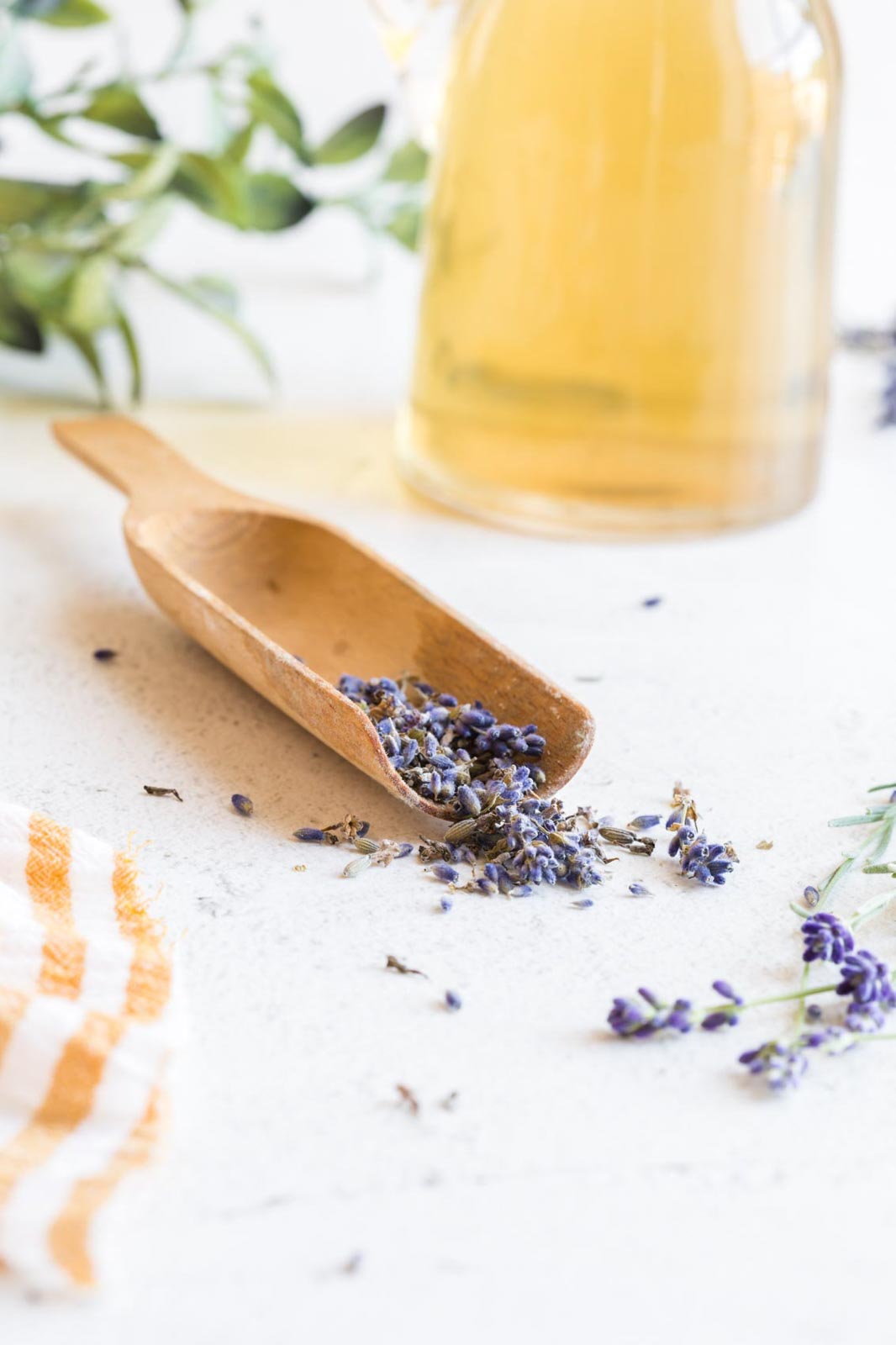
Always buy herbs from a reputable source. If you are going to ingest them make sure you know how they have been raised. I grow my own lavender on our farm and that’s what I used in this recipe but if you don’t, make sure what you buy is certified organic.
I don’t always love buying on Amazon but if you go that route make sure your lavender is coming from a business that has a store on the site.
Mountain Rose Herbs is another company I trust greatly for the medicinals I use if I can’t grow something.
Fresh vs dried lavender flowers
The strength of dried flowers will vary widely from fresh ones. Use one or two tablespoons of dried and up to 1/4 cup of fresh flowers.
If you are using fresh flowers, try to pick them first thing in the morning so the oils are most potent.
What you’ll need to make lavender syrup
Ingredients for Lavender Syrup
To make a delicious and fragrant lavender syrup at home,you only need three ingredients. Here are the key components that you will need to gather before you begin:
- Lavender Buds: The first and most important ingredient for lavender syrup is dried lavender buds. You can find these at many specialty food stores or online. Look for culinary-grade lavender buds, which are specifically intended for cooking and baking. You can also use fresh flower buds, you’ll just need more of them compared to dry.
- Sugar: The second key ingredient for lavender syrup is sugar. You will need a good amount of sugar to balance out the strong floral flavors of the lavender. I often use honey in place of the sugar. Just make sure it’s a mild or light colored honey and not a dark one to keep it from overpowering your syrup.
- Water: Finally, you will need water to create the syrup base. You can use tap water, but filtered, spring or distilled water is recommended to avoid any off-flavors or impurities. The amount of water you will need will depend on the recipe you are following, but a general rule of thumb is to use equal parts sugar and water.
Equipment Needed
Making lavender syrup requires a few essential tools and ingredients. Here are the items you will need to get started:
- Saucepan: A medium-sized saucepan is ideal for making lavender syrup. It should be made of a non-reactive material such as stainless steel or enamel-coated cast iron.
Fine Mesh Strainer: A fine mesh strainer is essential for removing the lavender buds from the syrup. A cheesecloth can also be used.
Measuring Cups and Spoons: Accurate measurements are crucial when making lavender syrup. A set of measuring cups and spoons will ensure that you add the right amount of each ingredient.
How to make lavender syrup step by step
Measure the sugar or honey and lavender buds into a heat proof bowl or measuring cup.
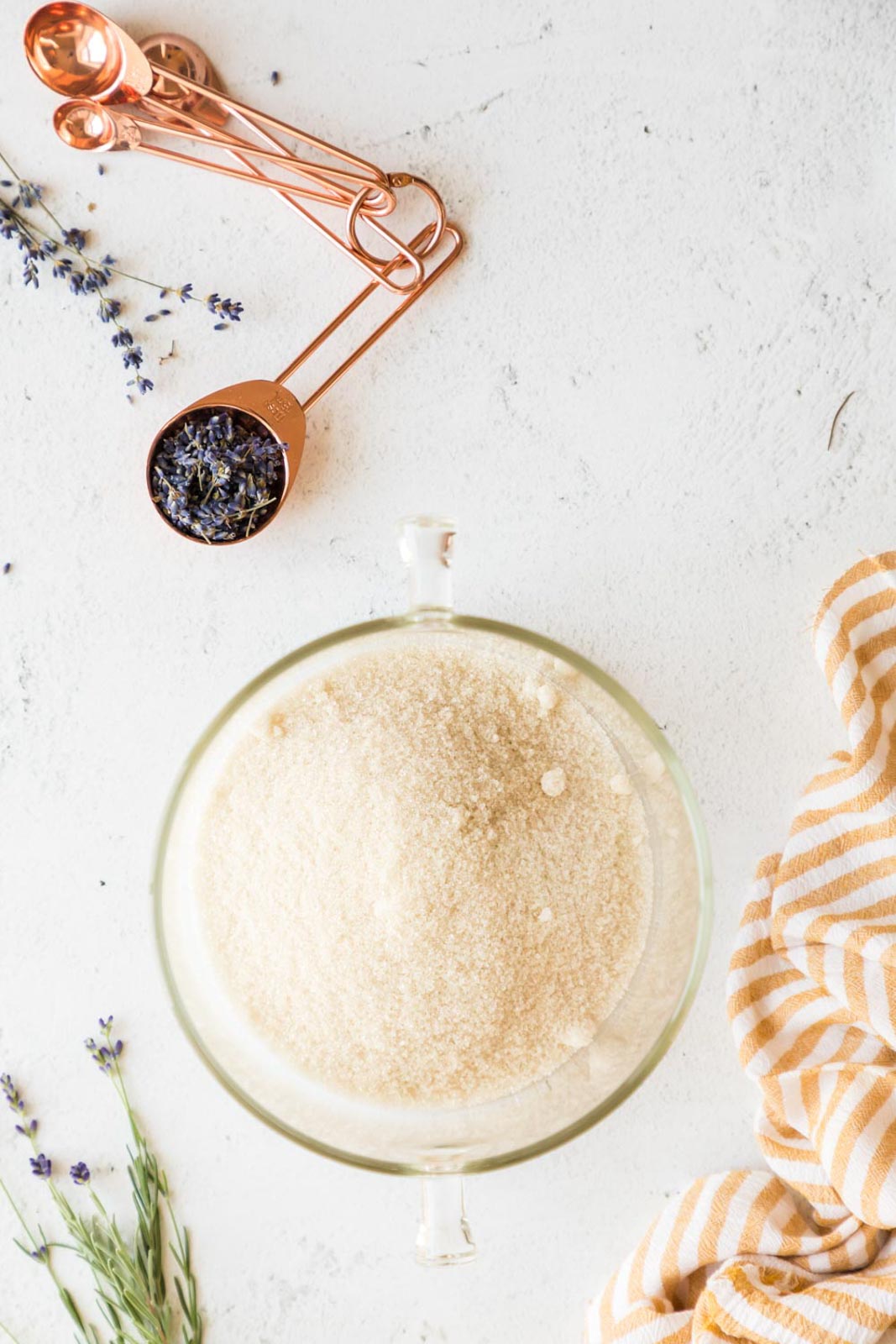
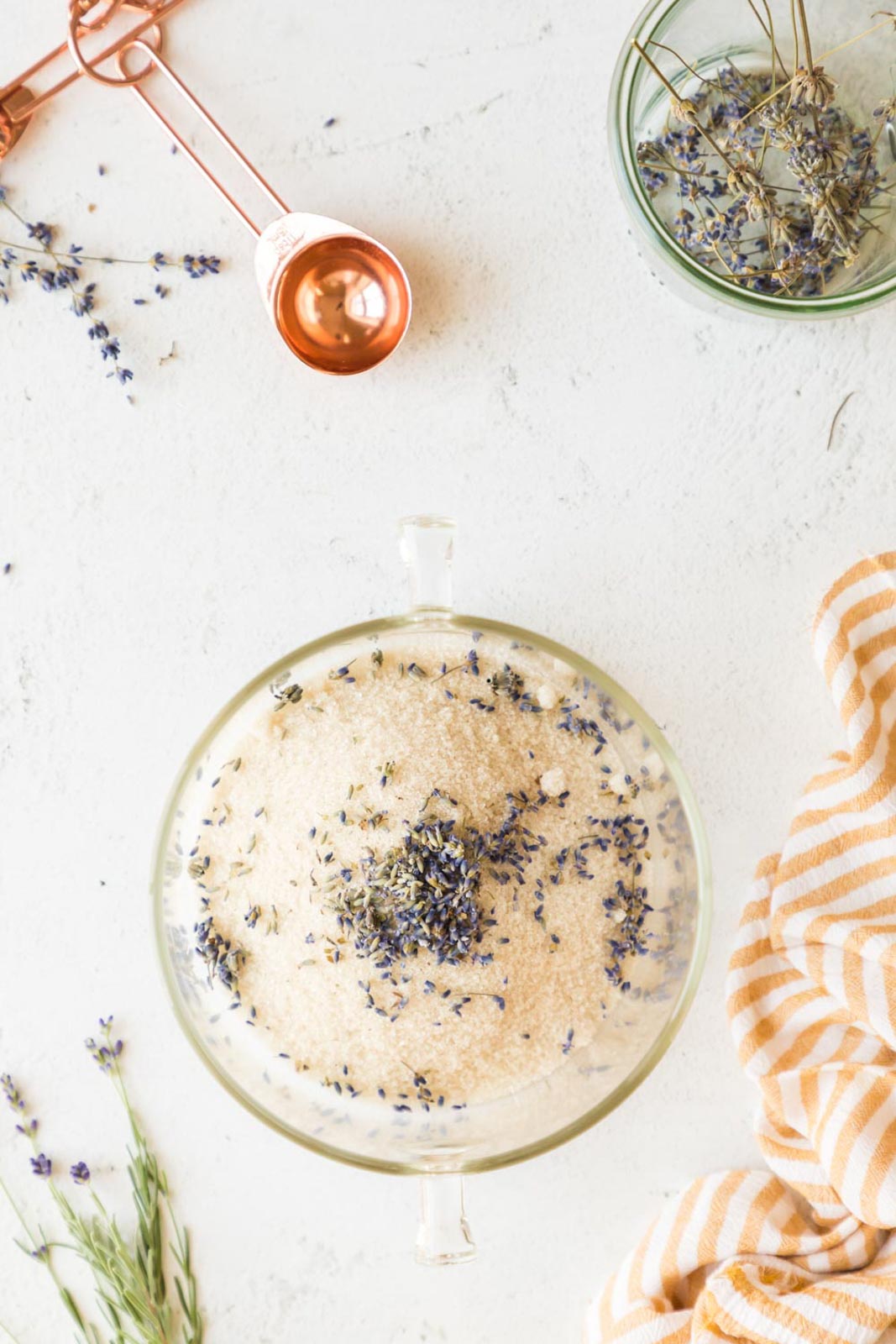
Pour over two cups of boiling water. I bring mine to a boil in the microwave but any method works. Stir constantly for a couple of minutes until the sugar dissolves completely.

Allow the mixture to steep for at least 30 minutes for a mild lavender flavor or up to 12 hours for a stronger flavor. Taste your syrup occasionally and see how it’s coming along.
When it reaches a strength you like, pour the syrup through a mesh strainer and press well to get every drop of syrup out of the lavender buds. You can discard the lavender and then store the syrup.
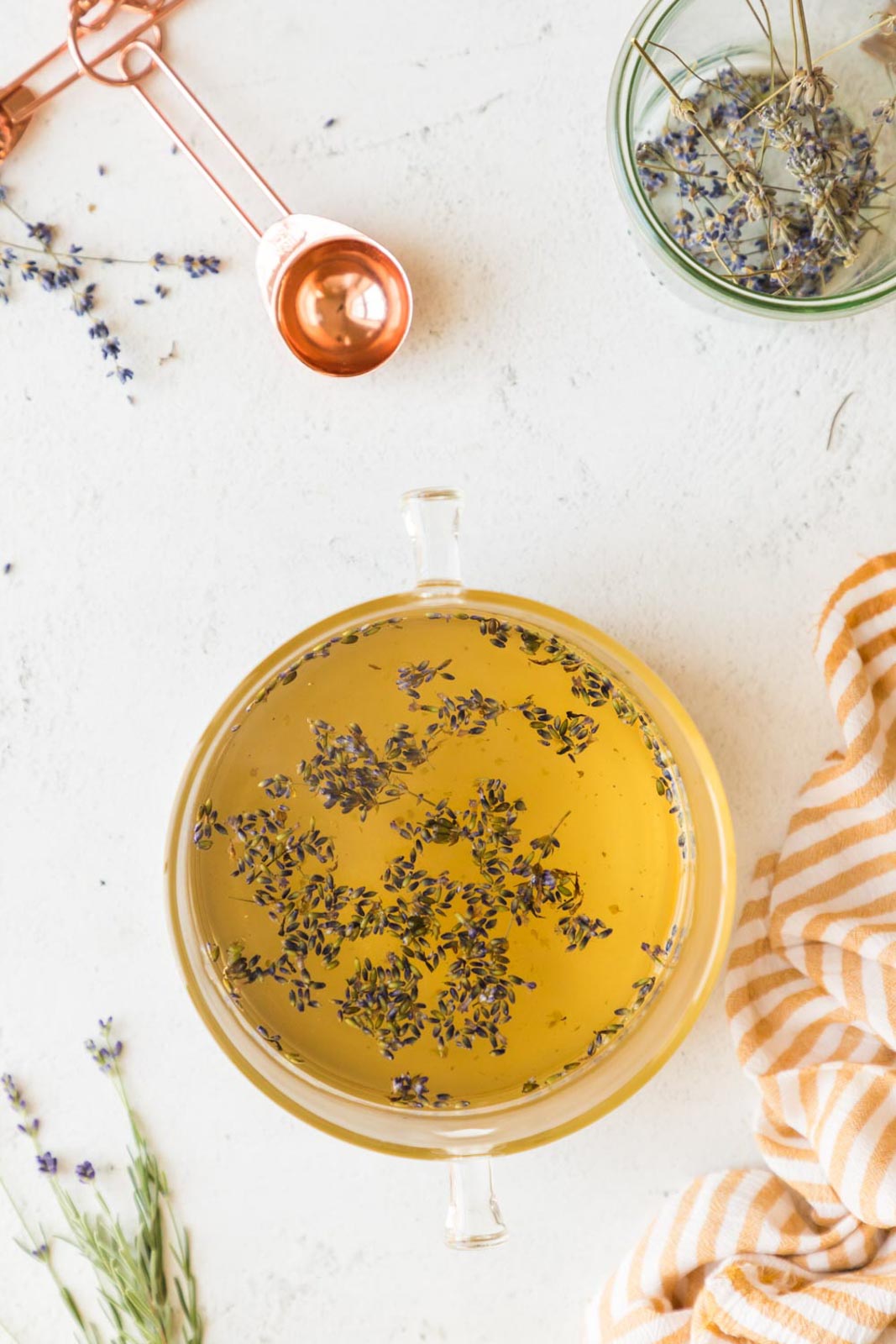
How to serve lavender syrup
In Beverages
Lavender syrup can add a unique and refreshing twist to your favorite beverages. Here are a few ideas to get you started:
- Lavender Lemonade: Mix lavender syrup with freshly squeezed lemon juice and water for a refreshing summer drink.
- Lavender Latte: Add a splash of lavender syrup to your latte for a floral and aromatic twist.
- Lavender Tea: Add a drizzle of lavender syrup to your favorite tea for a relaxing and soothing beverage.
In Desserts
Lavender syrup can also be used to add a touch of sweetness and floral flavor to your favorite desserts. Here are a few ideas to try:
- Lavender Ice Cream: Mix lavender syrup into your homemade ice cream base for a unique and delicious treat.
- Lavender Shortbread: Drizzle lavender syrup over freshly baked shortbread cookies for a delicate and fragrant dessert.
- Lavender Cheesecake: Swirl lavender syrup into your cheesecake batter before baking for a beautiful and flavorful dessert.
Experiment with different flavor combinations and find your own favorite ways to use this fragrant syrup.
Storage and Shelf Life
Once the lavender syrup is made, it is important to store it properly to maintain its quality and flavor. Here are some tips on how to store lavender syrup:
- Store in a clean, airtight container: Transfer the syrup into a clean, airtight container such as a glass bottle or jar with a tight-fitting lid. This will prevent the syrup from absorbing any unwanted odors or flavors and keep it fresh for longer. I don’t recommend keeping it in plastic.
- Refrigerate: Lavender syrup should be stored in the refrigerator to maintain its freshness and prevent spoilage. It can last for up to 2 weeks in the refrigerator.
- Freeze: If you have made a large batch of lavender syrup, you can freeze it for later use. Pour the syrup into ice cube trays and freeze. Once frozen, transfer the cubes into a freezer-safe container or bag. The syrup can be stored in the freezer for up to 6 months.
- Check for spoilage: Before using the syrup, always check for any signs of spoilage such as mold, discoloration, or an off smell. If you notice any of these signs, discard the syrup.
If you are looking for more ways to use lavender syrup in cocktails, take a look at these lavender drink ideas.
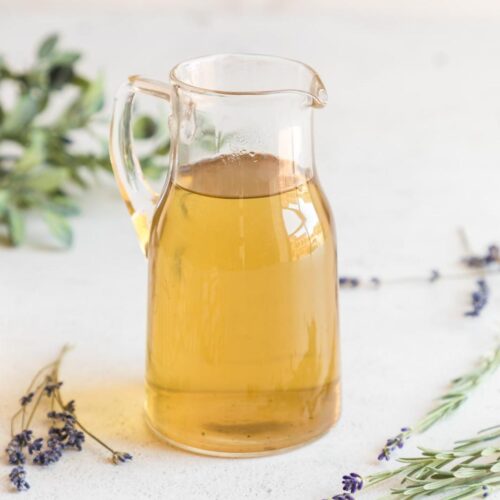
Lavender Syrup
Ingredients
- 1 cup sugar or honey
- 1-2 tablespoons dried lavender flowers
- 2 cups boiling water
Instructions
- Add the sugar and lavender flowers to a heat safe measuring cup or bowl.
- Pour over the boiling water and stir to dissolve the sugar which should take about a minute.
- Let the mixture steep at least 30 minutes or up to 4 hours for maximum flavor.
- Strain the mixture to remove the flowers and store in an air tight container in the refrigerator for up to two weeks.
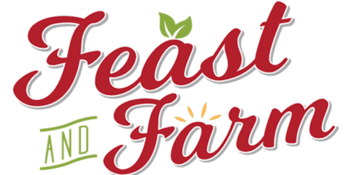
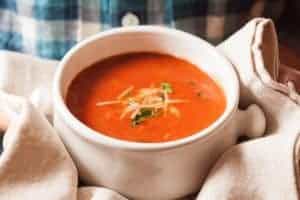
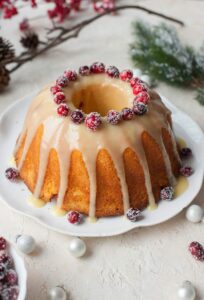


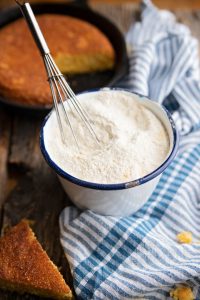

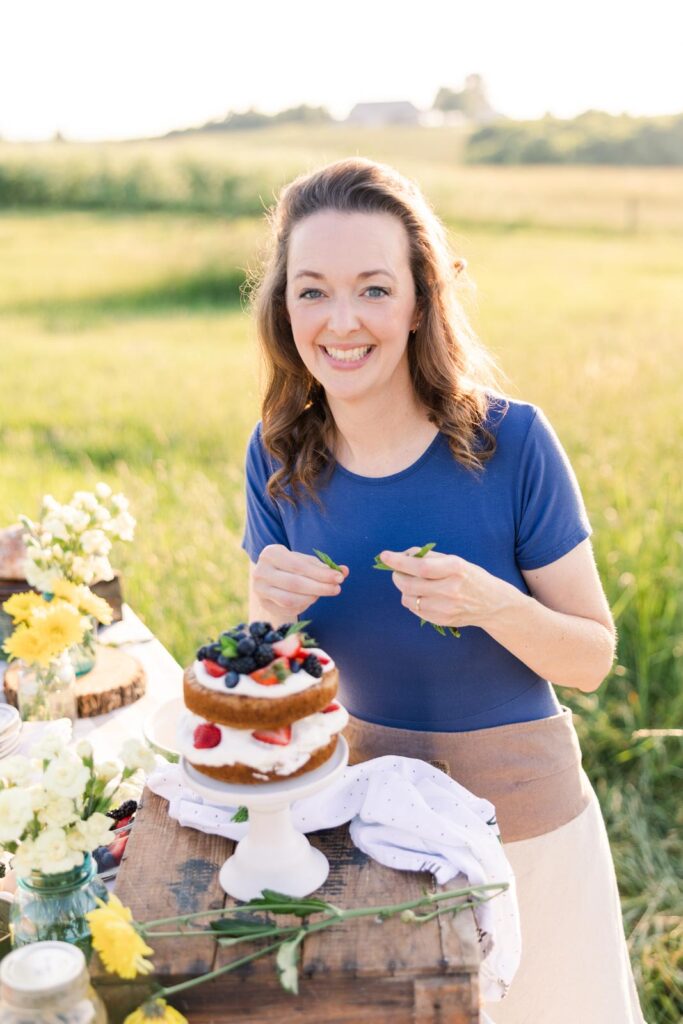
I first made this syrup using a sweetener since my daughter has diabetes. It tasted terrible, so I threw it out. Last week I made the syrup your way, with sugar, and it is soo delicious! 🙂
I’m glad it worked for you Angel. It really is delicious–and yes, artificial sweeteners can have strange chemical reactions and I think they taste GROSS anyway! –Rachel